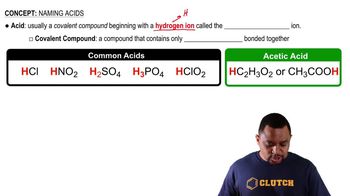Multiple Choice
Determine volume (mL) needed to prepare a 0.73 g of Ca(OH)2 solution with 1.25 N.
 Verified step by step guidance
Verified step by step guidance Verified video answer for a similar problem:
Verified video answer for a similar problem:



 0:57m
0:57mMaster Acid-Base Equivalents Concept 1 with a bite sized video explanation from Jules
Start learning